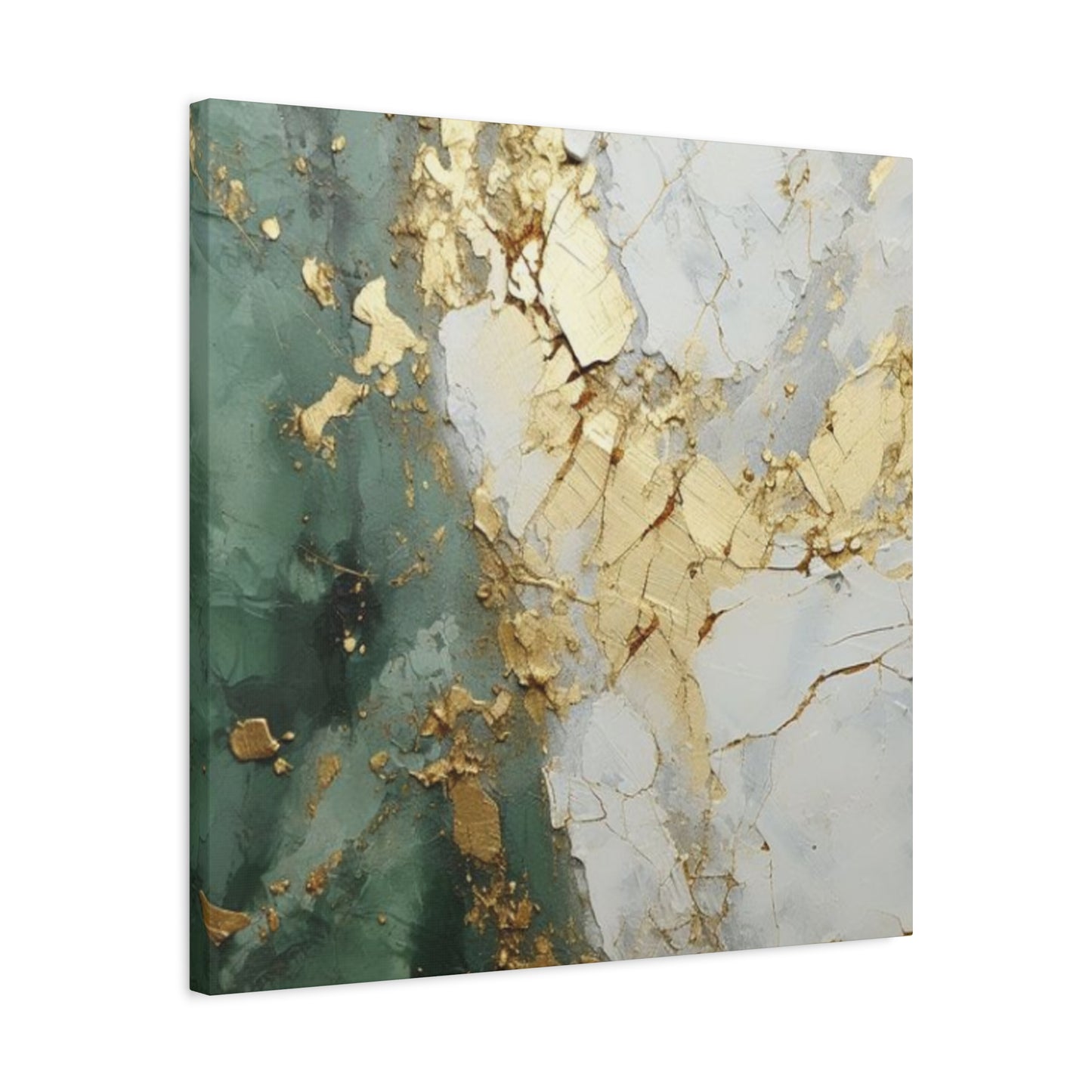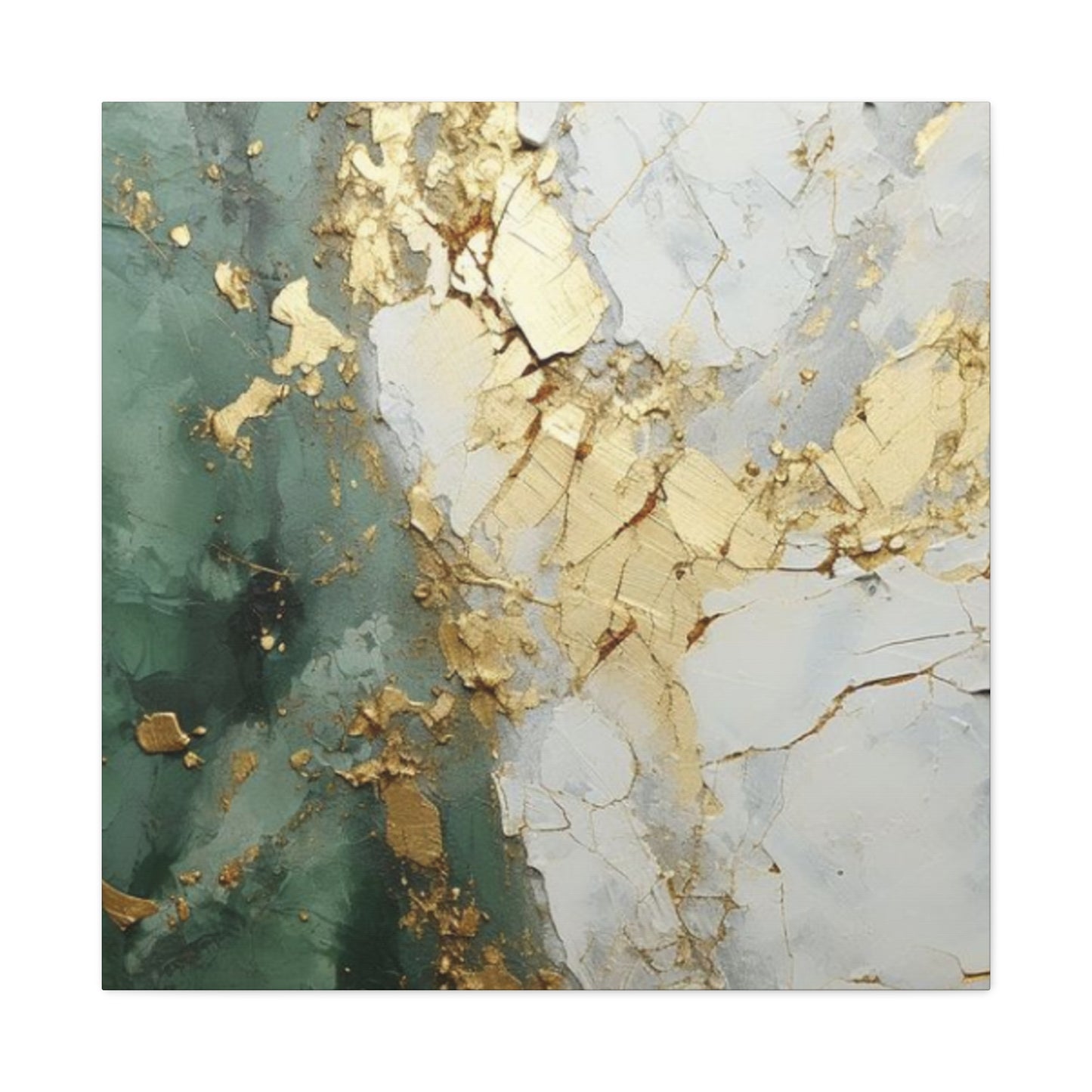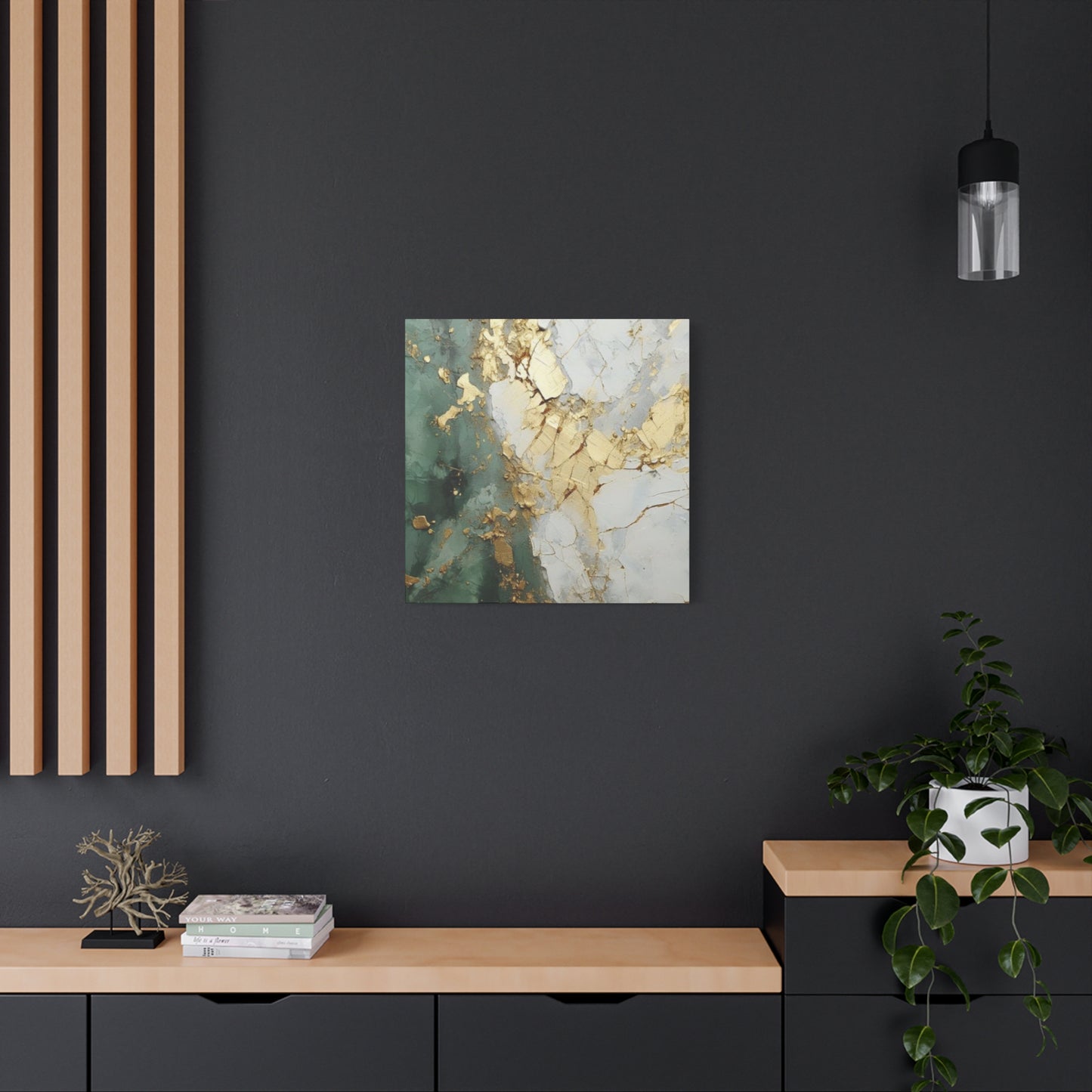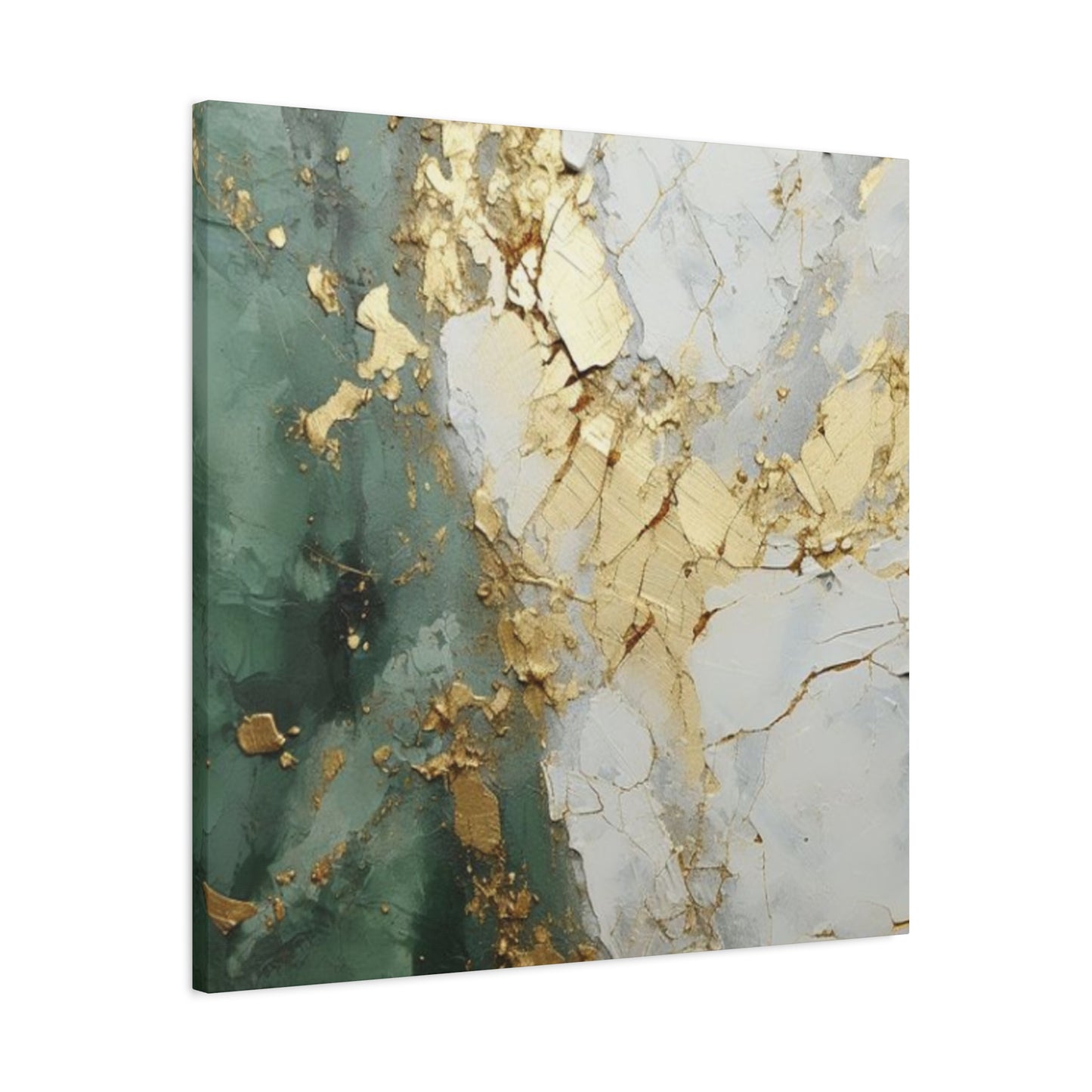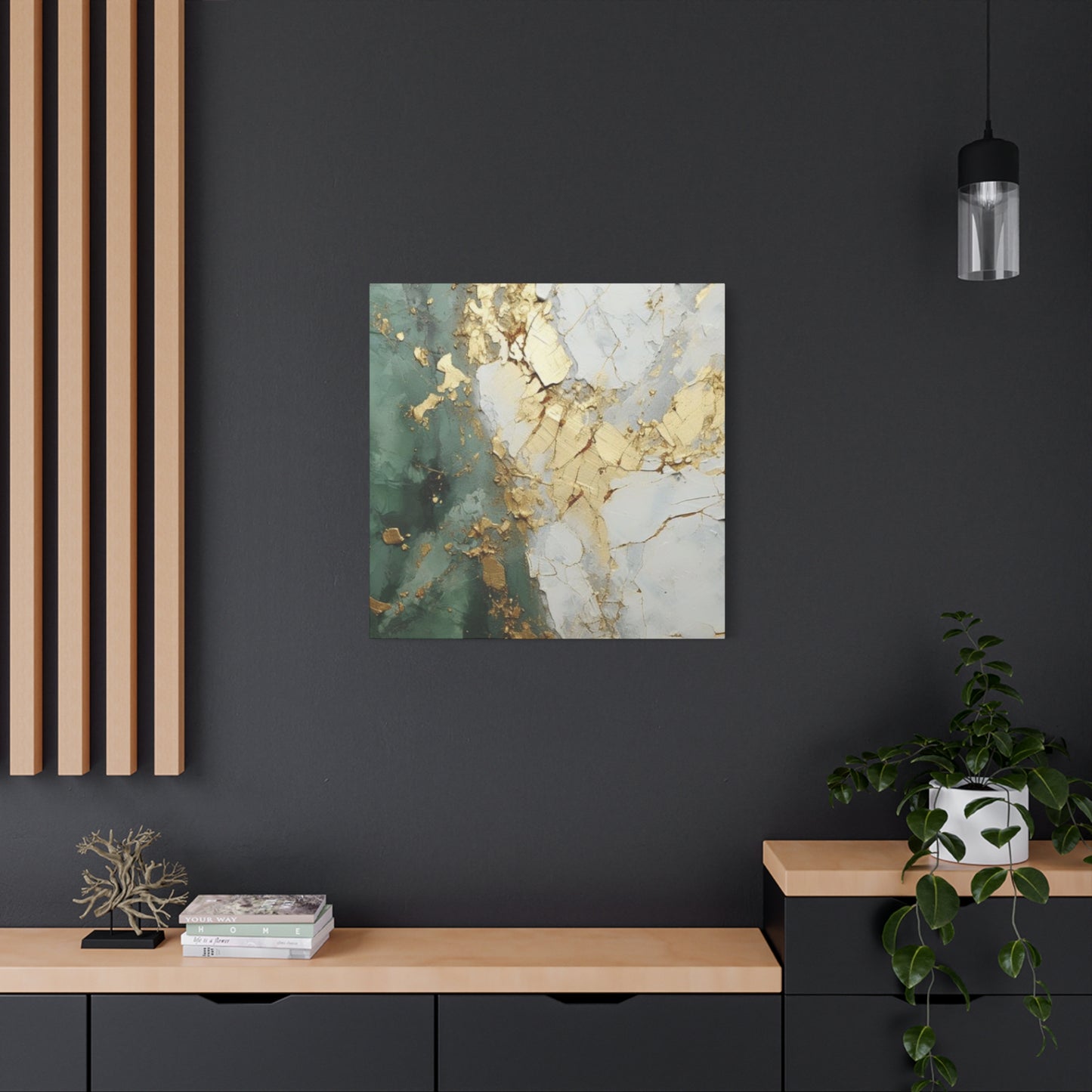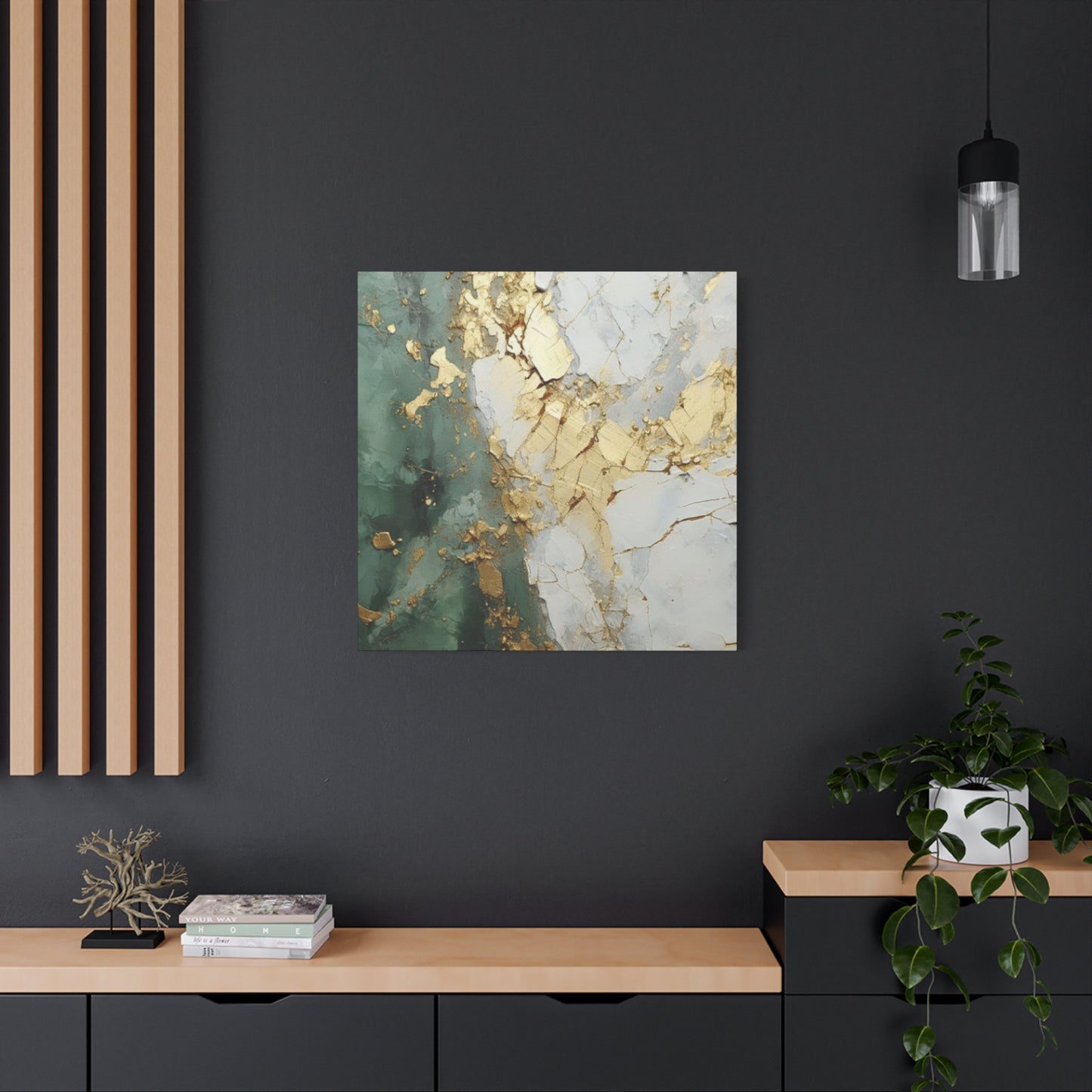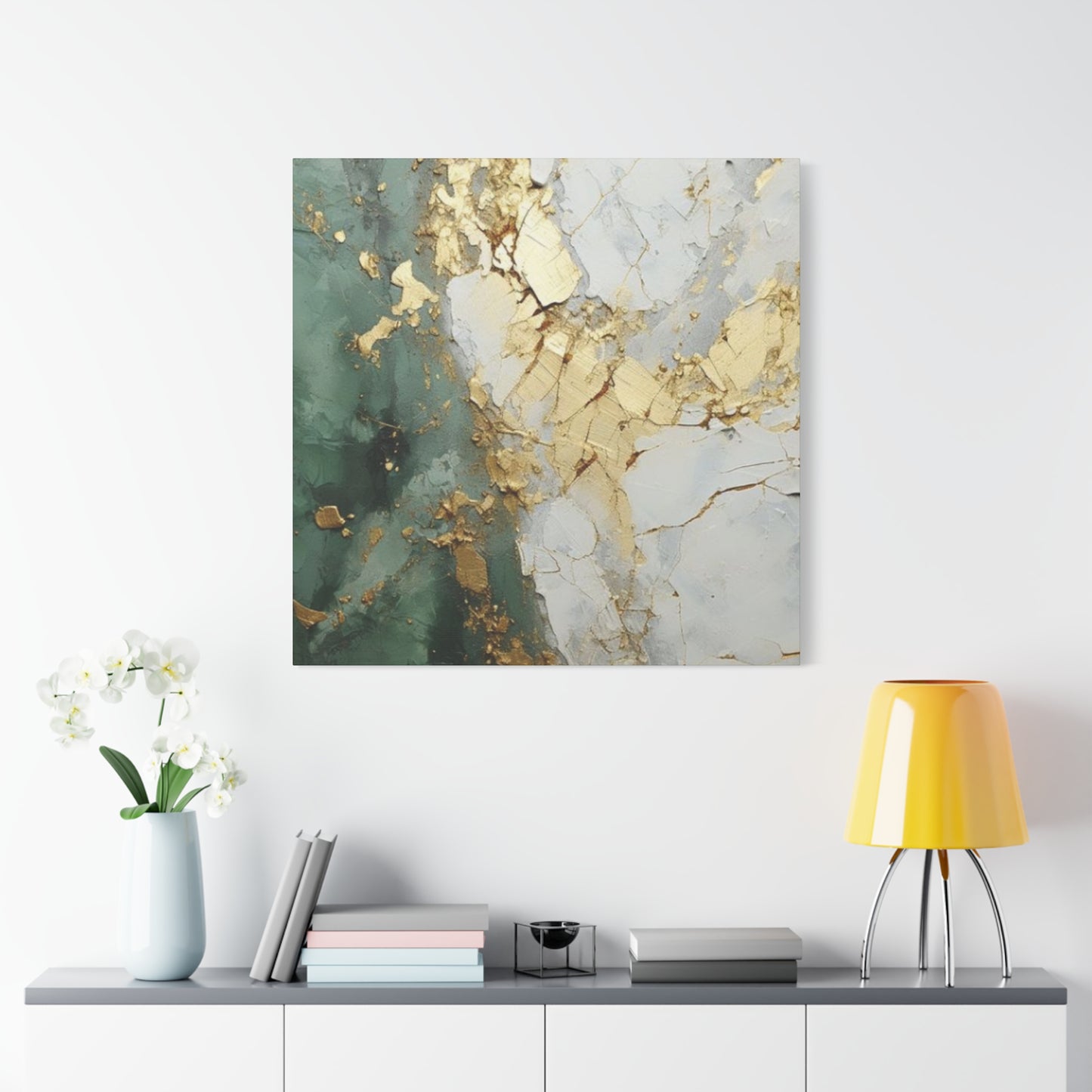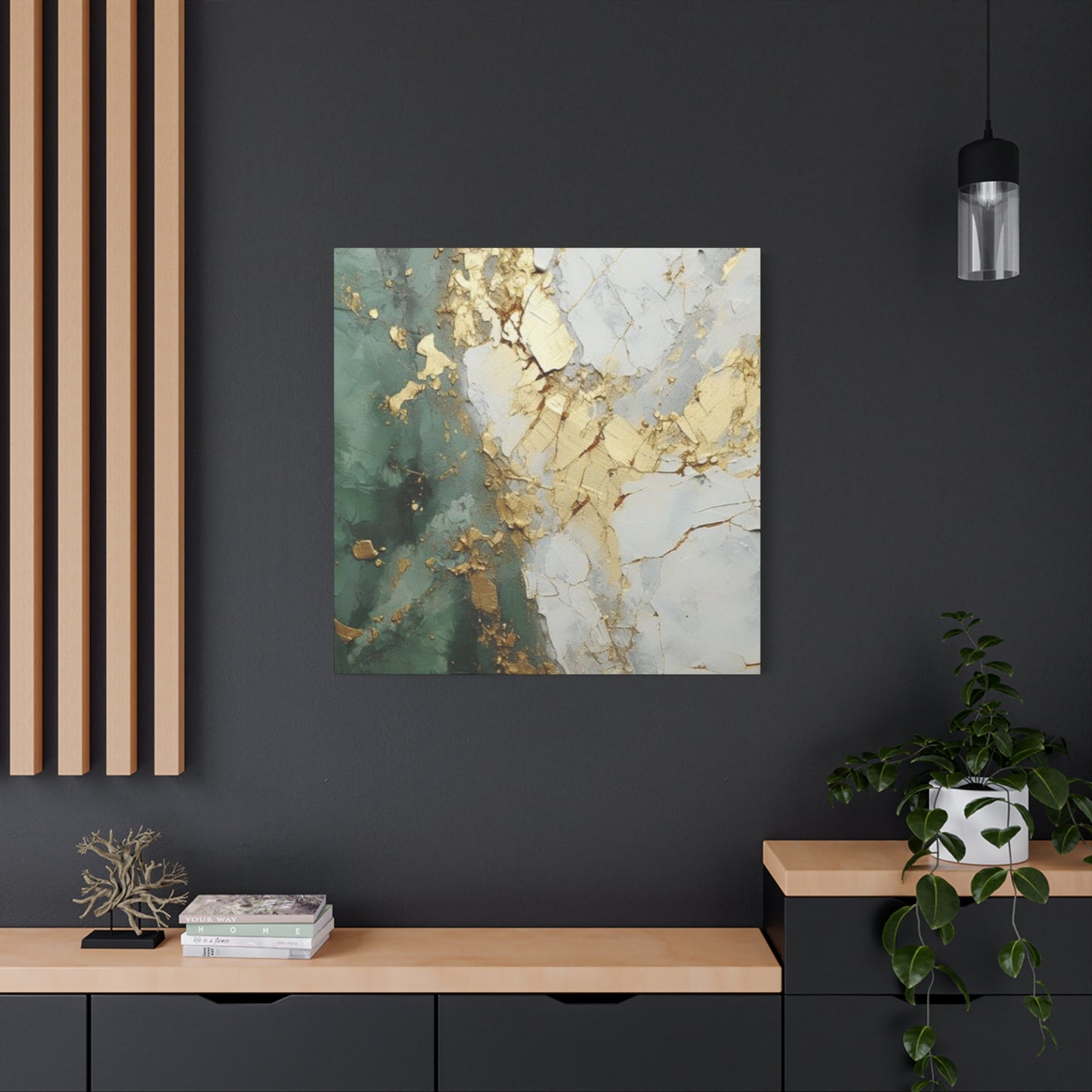Summer Vibes: Golden Teal Wall Art with Light Wood and Airy Fabrics
The enchanting combination of golden and teal colors has emerged as one of the most sophisticated and versatile palettes in contemporary home decoration. This stunning color duo represents a perfect marriage between warmth and coolness, luxury and tranquility, making it an ideal choice for homeowners seeking to create elegant and inviting living environments. The golden hues bring warmth, richness, and a sense of opulence to any room, while teal provides a calming, refreshing contrast that prevents the golden tones from becoming overwhelming.
Golden teal artwork serves as the perfect focal point for various decorating styles, from modern minimalist approaches to more traditional and eclectic designs. The versatility of this color combination allows it to complement numerous existing color schemes while adding depth and visual interest to walls that might otherwise appear plain or uninspiring. When incorporated thoughtfully into home decoration projects, golden teal pieces can transform ordinary rooms into extraordinary living environments that reflect both sophistication and personal style.
The psychological impact of these colors cannot be understated. Golden tones are associated with success, prosperity, and positive energy, while teal is linked to emotional balance, clarity of thought, and peaceful contemplation. Together, they create an atmosphere that is both energizing and calming, making golden teal artwork particularly suitable for areas where people gather to relax, work, or entertain guests. This unique combination has gained tremendous popularity among decorators and homeowners who appreciate the balance between luxury and serenity that these colors provide.
Exploring Various Styles and Types of Golden Teal Artistic Creations
The world of golden teal artwork encompasses an incredibly diverse range of styles, techniques, and materials, each offering unique aesthetic qualities and decorative possibilities. Abstract compositions featuring these colors often incorporate flowing shapes, geometric patterns, or textural elements that create visual movement and depth. These pieces typically feature sweeping brushstrokes, layered color applications, or digital manipulations that blend the golden and teal tones in harmonious yet dynamic ways.
Contemporary artists working with golden teal palettes often experiment with mixed media approaches, combining traditional painting techniques with metallic accents, textural additives, or digital printing methods. These innovative approaches result in artwork that appears to shimmer and change depending on lighting conditions and viewing angles, adding an element of interactive visual interest to the finished pieces. Many artists also incorporate natural motifs such as leaves, flowers, water patterns, or organic shapes that complement the inherent connection between golden warmth and teal coolness.
Nature-inspired golden teal artwork frequently features botanical elements, landscape scenes, or abstract interpretations of natural phenomena. These pieces might depict golden autumn leaves against teal backgrounds, underwater scenes with golden fish swimming through teal waters, or abstract representations of sunset reflections on calm lakes. The natural world provides endless inspiration for artists working with this color combination, as golden and teal tones appear frequently in nature, from tropical fish to mineral formations to seasonal foliage displays.
Geometric and architectural designs in golden teal combinations offer more structured approaches to this color palette. These pieces might feature precise patterns, mathematical sequences, or architectural elements rendered in carefully balanced proportions of gold and teal. Such artwork appeals particularly to homeowners with modern or contemporary decorating preferences, as the clean lines and systematic color applications complement minimalist furniture and streamlined room layouts.
Metal Artwork Featuring Golden and Teal Elements
Metallic artwork incorporating golden and teal elements represents one of the most striking and durable options available to modern homeowners. These pieces typically feature hand-forged iron, aluminum, or steel components that have been treated with specialized finishes to achieve the desired golden and teal coloration. The three-dimensional nature of metal artwork adds sculptural qualities that flat paintings or prints cannot match, creating dramatic shadows and highlighting effects that change throughout the day as natural lighting conditions shift.
Handcrafted metal pieces often incorporate nature-inspired motifs such as butterflies, leaves, flowers, or trees, rendered in intricate detail through careful metalworking techniques. These elements are frequently finished with golden coatings or patinas that complement teal-colored background sections or supporting structures. The contrast between metallic surfaces and colored elements creates visual depth and textural interest that draws viewers closer for detailed examination of the craftsmanship involved.
The durability of metal artwork makes it particularly suitable for areas with high humidity, temperature fluctuations, or frequent cleaning requirements. Unlike canvas or paper-based pieces, metal artwork can withstand occasional moisture exposure and can be cleaned with gentle methods without risking damage to the artistic elements. This practical advantage makes metal golden teal pieces excellent choices for kitchens, bathrooms, or covered outdoor areas where other artwork materials might deteriorate over time.
Contemporary metal artists often combine traditional forging techniques with modern finishing methods to create pieces that appear both timeless and current. These works might feature hammered textures, welded joints, or cut-out sections that create interesting positive and negative visual relationships. When illuminated properly, metal artwork can cast fascinating shadows on surrounding walls, effectively doubling the decorative impact of each piece.
Canvas Artwork in Golden Teal Color Schemes
Canvas artwork remains one of the most popular and accessible formats for golden teal decorative pieces, offering endless possibilities for artistic expression and home decoration applications. Modern canvas pieces featuring these colors range from traditional oil paintings to digital prints, acrylic compositions, and mixed media works that incorporate additional materials for enhanced textural interest. The flexibility of canvas as a medium allows artists to experiment with various application techniques, layering methods, and finishing approaches that would be impossible with rigid surfaces.
Multi-panel canvas sets have become increasingly popular for creating dramatic focal points in larger rooms or open floor plans. These arrangements typically consist of three to five individual canvas panels that work together to create cohesive compositions while allowing for flexible installation configurations. Five-panel sets are particularly effective for creating wide horizontal displays above furniture pieces such as sofas, beds, or dining tables, while vertical arrangements work well in narrow hallway situations or beside stairways.
Textured canvas work adds dimensional qualities that enhance the visual impact of golden teal color combinations. Artists achieve these effects through various techniques including heavy brush applications, palette knife work, mixed media additions, or specialized texture mediums that create raised surfaces. When combined with strategic lighting placement, textured canvas pieces create dynamic visual experiences that change as viewers move around the room or as lighting conditions shift throughout the day.
Abstract cityscape interpretations in golden teal palettes have gained particular popularity among urban dwellers and those who appreciate contemporary architectural themes. These pieces often feature stylized building silhouettes, bridge structures, or skyline panoramas rendered in sophisticated combinations of golden and teal tones. The urban themes resonate with modern lifestyle preferences while the color palette maintains the elegance and sophistication that makes these pieces suitable for refined home environments.
Three-Dimensional and Sculptural Golden Teal Pieces
Three-dimensional artwork incorporating golden and teal elements offers unique opportunities to create truly striking focal points that extend beyond traditional flat mounting approaches. These pieces might include sculptural elements that project from mounting surfaces, creating shadow patterns and depth variations that enhance the overall visual impact. Contemporary artists working in this medium often combine multiple materials and techniques to achieve complex visual relationships between golden and teal components.
Luxury three-dimensional pieces frequently feature animal motifs such as deer, birds, or abstract creature forms rendered in golden finishes with teal accent elements or backgrounds. These works appeal to collectors and homeowners who appreciate both artistic craftsmanship and symbolic representation in their decorative choices. The combination of precious metal finishes with carefully selected color accents creates pieces that appear both valuable and meaningful, making them suitable for prominent display locations.
Relief sculptures and raised panel designs offer another approach to three-dimensional golden teal artwork. These pieces typically feature carved or molded surfaces that create varying depth levels, allowing artists to use golden and teal finishes to emphasize different dimensional planes. The interplay between raised and recessed areas creates natural highlighting and shadowing effects that enhance the color relationships while adding sculptural interest to wall-mounted pieces.
Mixed media three-dimensional works often incorporate found objects, natural materials, or industrial components alongside traditional artistic elements. These eclectic approaches result in unique pieces that tell stories or convey specific themes while maintaining the aesthetic appeal of the golden teal color combination. Such artwork particularly appeals to collectors who value originality and conceptual depth in addition to decorative beauty.
Nature-Inspired Golden Teal Decorative Elements
Nature provides endless inspiration for artists working with golden teal color palettes, as these hues appear frequently in natural settings ranging from tropical environments to seasonal forest displays. Feather-inspired artwork captures the delicate beauty and organic flowing forms found in bird plumage, often featuring golden highlights on teal base colors or teal accents on predominantly golden compositions. These pieces bring elements of the natural world into indoor environments while maintaining sophisticated color relationships that complement contemporary decorating approaches.
Botanical artwork featuring leaves, flowers, or tree forms rendered in golden teal combinations offers opportunities to incorporate natural themes without the maintenance requirements of living plants. These pieces might feature realistic representations of specific plant species or abstract interpretations that capture the essence of natural growth patterns and organic shapes. The combination of golden warmth with teal coolness perfectly mirrors the way sunlight and shadow interact with foliage in natural settings.
Water-inspired golden teal artwork draws on the natural relationships between light and liquid, creating pieces that evoke feelings of tranquility and movement. These compositions might feature flowing patterns that suggest streams or waves, with golden elements representing sunlight reflections and teal areas depicting water depths. Such pieces work particularly well in areas where relaxation and contemplation are priorities, such as bedrooms, meditation rooms, or quiet reading nooks.
Landscape interpretations in golden teal palettes often focus on transition moments such as dawn or dusk when natural lighting creates similar color relationships in the environment. These pieces might depict abstract horizon lines, mountain silhouettes, or aerial perspectives that capture the grandeur of natural vistas while maintaining the sophisticated color control that makes them suitable for refined decorating applications.
Geometric and Pattern-Based Golden Teal Designs
Geometric artwork featuring golden teal color combinations appeals particularly to homeowners with modern sensibilities and appreciation for mathematical precision in artistic expression. These pieces typically feature carefully planned pattern relationships, symmetrical arrangements, or systematic color progressions that create visual harmony through structured approaches rather than organic flowing forms. The precision required for successful geometric compositions demonstrates artistic skill while providing decorative solutions that complement contemporary furniture and architectural elements.
Digital art techniques have opened new possibilities for creating complex geometric patterns in golden teal combinations. These methods allow artists to achieve perfect symmetry, precise color gradations, and intricate pattern relationships that would be extremely difficult to accomplish through traditional hand-painting methods. The resulting pieces often feature crystalline precision and mathematical beauty that appeals to viewers who appreciate both artistic expression and technical excellence.
Mandala-inspired designs incorporating golden and teal elements combine geometric precision with spiritual symbolism, creating pieces that serve both decorative and contemplative purposes. These circular compositions typically feature radiating patterns that draw viewers toward central focal points while incorporating color relationships that enhance the meditative qualities associated with mandala forms. The combination of sacred geometry with sophisticated color palettes results in artwork that transcends purely decorative functions.
Architectural pattern interpretations often feature building-inspired motifs such as arches, columns, or structural elements rendered in golden teal combinations. These pieces appeal particularly to homeowners who appreciate classical architectural traditions while preferring contemporary color applications. The structural themes provide visual stability and formal organization while the color palette adds warmth and sophistication to what might otherwise appear cold or institutional.
Modern Abstract Approaches to Golden Teal Artwork
Contemporary abstract art featuring golden teal palettes pushes creative boundaries while maintaining aesthetic appeal for diverse home decorating applications. These pieces often feature experimental techniques, unconventional material combinations, or innovative application methods that result in unique visual experiences. Abstract approaches allow artists maximum freedom to explore color relationships, textural possibilities, and compositional arrangements without the constraints imposed by representational requirements.
Fluid art techniques create organic patterns and color blending effects that occur naturally during the artistic process. These methods often involve pouring, dripping, or allowing paints to flow freely across canvas surfaces, resulting in unpredictable yet harmonious color relationships. When executed with golden and teal pigments, fluid art techniques can create pieces that appear to capture natural phenomena such as mineral formations, water patterns, or atmospheric effects.
Layered abstract compositions build visual depth through successive application of translucent and opaque materials in golden teal combinations. These pieces often feature multiple visual levels that reward close examination while maintaining overall coherence when viewed from normal room distances. The layering approaches allow artists to create complex color relationships and subtle transition effects that add sophistication to the finished works.
Mixed media abstract pieces incorporate diverse materials and techniques to create unique textural and visual experiences. These works might combine traditional painting methods with collage elements, metallic accents, or three-dimensional components that extend the artistic expression beyond flat surface limitations. The experimental nature of mixed media approaches often results in pieces that serve as conversation starters while providing long-term visual interest for daily viewing.
Marble-Inspired Golden Teal Decorative Options
Marble-pattern artwork featuring golden teal color combinations offers the luxurious appearance of natural stone without the weight, cost, or installation complexity associated with actual marble materials. These pieces typically feature swirling patterns, veining effects, or crystalline structures that mimic the natural formation processes that create marble's distinctive appearance. The combination of golden and teal tones adds contemporary color interest to classical marble aesthetics, creating pieces that bridge traditional and modern decorating approaches.
Digital printing techniques allow artists to create highly detailed marble effects with precise color control and pattern consistency. These methods can produce large-format pieces suitable for dramatic room focal points while maintaining sharp detail resolution and color accuracy throughout the composition. The technical capabilities of modern printing equipment enable the creation of marble-inspired pieces that rival the natural material in visual impact while offering greater design flexibility.
Hand-painted marble effects require considerable artistic skill to achieve convincing natural appearance while incorporating specific color requirements. Artists working in this medium often study actual marble samples to understand the natural pattern relationships and color variations that make genuine marble so visually appealing. The challenge of recreating these natural effects while maintaining predetermined color palettes results in pieces that demonstrate both technical expertise and aesthetic sensitivity.
Long narrow format marble-inspired pieces work particularly well for specific architectural situations such as hallway displays, above-furniture mounting, or accent applications where horizontal emphasis is desired. These proportions complement many room layouts while providing opportunities to incorporate golden teal color schemes in situations where square or vertical formats might appear awkward or disproportionate.
Size Considerations for Golden Teal Artwork Selection
Selecting appropriate artwork dimensions requires careful consideration of room proportions, furniture relationships, and viewing distances to achieve optimal visual impact and aesthetic harmony. Oversized pieces can overwhelm smaller rooms or delicate furniture arrangements, while undersized artwork may appear insignificant in large environments or when mounted above substantial furniture pieces. The goal is to achieve proportional relationships that enhance both the artwork and the surrounding environment.
Large-scale golden teal pieces work best in rooms with generous wall areas and substantial furniture that can visually support their presence. These pieces often serve as primary focal points around which entire room color schemes and decorating approaches are organized. When selecting large artwork, consider not only the immediate visual impact but also the long-term viewing comfort, as pieces that initially appear dramatic may become overwhelming with extended daily exposure.
Medium-sized pieces offer versatility for diverse room situations and decorating approaches. These dimensions typically work well above standard furniture pieces such as sofas, beds, or dining tables while remaining manageable for installation and future relocation if decorating changes become necessary. Medium-sized golden teal artwork can serve as accent pieces within larger decorating schemes or as primary focal points in more intimate room settings.
Small-scale pieces provide opportunities to incorporate golden teal color elements without making major decorating commitments or requiring significant wall areas. These works often function effectively as part of gallery arrangements, grouped displays, or accent elements that complement larger decorative features. Multiple small pieces can be arranged to create custom configurations that adapt to specific architectural features or furniture arrangements.
Placement Strategies for Maximum Visual Impact
Strategic artwork placement enhances both the aesthetic impact of individual pieces and their integration within overall room designs. Proper positioning considers factors such as natural lighting sources, artificial illumination options, viewing angles, and relationships with surrounding decorative elements. The goal is to create arrangements that showcase the artwork effectively while supporting the room's functional and aesthetic objectives.
Above-furniture placement represents one of the most common and effective strategies for artwork display. Golden teal pieces mounted above sofas, beds, or dining tables create natural focal points while establishing color relationships that can be echoed throughout the room through accessories, textiles, or accent pieces. The key to successful above-furniture placement lies in achieving appropriate proportional relationships between artwork dimensions and furniture scale.
Hallway and corridor applications offer unique opportunities to display longer format golden teal pieces that might appear awkward in conventional room settings. These transitional areas benefit from artwork that creates visual interest during passage while maintaining appropriate scale relationships with the narrow proportions typical of corridor environments. Proper lighting becomes particularly important in hallway applications to ensure adequate visibility and color appreciation.
Corner installations can transform otherwise unused areas into striking decorative features. Golden teal artwork positioned in room corners often benefits from creative lighting approaches that emphasize both the colors and any dimensional or textural qualities present in the pieces. Corner placement works particularly well for three-dimensional or sculptural works that can be appreciated from multiple viewing angles.
Gallery wall arrangements allow multiple golden teal pieces to work together in creating comprehensive decorative statements. These installations require careful planning to achieve visual balance while maintaining individual piece identity. Successful gallery arrangements often incorporate varying sizes, formats, and artistic approaches united by the common golden teal color palette.
Lighting Considerations for Golden Teal Artwork
Proper illumination plays a crucial role in revealing the full beauty and impact of golden teal artwork while ensuring accurate color representation and visual comfort for viewers. Different lighting approaches can dramatically alter the appearance of golden and teal tones, making lighting selection and placement critical decisions in the overall presentation strategy. Natural lighting conditions change throughout the day, creating dynamic viewing experiences that should be considered alongside artificial lighting requirements.
Natural light sources provide the most accurate color representation for golden teal artwork, but their intensity and color temperature vary significantly based on time of day, weather conditions, and seasonal changes. North-facing exposures typically provide consistent, cool light that may emphasize teal components while subduing golden elements. South-facing locations receive intense, warm light that can enhance golden tones but may cause teal colors to appear faded or washed out during peak sunlight hours.
Artificial lighting options include incandescent, fluorescent, LED, and specialty art lighting systems, each offering different color temperatures and quality characteristics. Warm-toned artificial lights enhance golden elements while potentially shifting teal tones toward green appearances. Cool-toned lighting emphasizes teal components while potentially diminishing the warmth of golden areas. Many homeowners find that adjustable lighting systems provide the flexibility needed to optimize artwork appearance for different occasions and preferences.
Track lighting and picture lighting systems offer focused illumination specifically designed for artwork display. These specialized options allow precise control over light intensity, direction, and coverage while minimizing glare and heat exposure that could potentially damage sensitive artwork materials. Professional-quality art lighting can dramatically enhance the visual impact of golden teal pieces while ensuring long-term preservation of artistic materials and finishes.
Material Durability and Maintenance Requirements
Different artwork materials require varying levels of care and maintenance to ensure long-term beauty and structural integrity. Understanding these requirements helps homeowners make informed decisions about artwork placement, handling procedures, and routine care practices that will preserve their investment while maintaining optimal visual appearance. Golden teal pieces may incorporate diverse materials ranging from traditional canvas and paint to modern metallic finishes and synthetic substrates.
Canvas-based artwork typically requires protection from direct sunlight, extreme temperature fluctuations, and high humidity levels that could cause stretching, warping, or color fading over time. Regular dusting with soft, dry brushes helps maintain surface appearance while avoiding moisture or chemical cleaners that could damage paint layers or canvas fibers. Professional conservation services may be necessary for valuable pieces showing signs of deterioration or damage.
Metal artwork generally offers superior durability compared to canvas or paper-based pieces, but may require specific care procedures depending on the finishing materials and techniques used. Painted metal surfaces should be cleaned with gentle methods to avoid scratching or removing decorative finishes. Some metal pieces may benefit from periodic protective coating applications to maintain corrosion resistance and finish appearance in challenging environmental conditions.
Digital prints and photographic reproductions offer excellent color stability and fade resistance when produced with archival materials and inks. These pieces typically require minimal maintenance beyond regular dusting and protection from direct sunlight exposure. The availability of replacement prints makes digital artwork particularly practical for environments where damage risks are elevated or where periodic style updates are anticipated.
Color Coordination with Existing Home Decor
Successfully integrating golden teal artwork into existing home decor requires understanding how these colors interact with current furnishings, paint colors, and accessory selections. The versatility of golden teal combinations allows them to complement numerous existing color schemes while adding sophisticated focal points that enhance overall design coherence. Careful consideration of color relationships ensures that new artwork additions feel intentional and harmonious rather than random or conflicting.
Neutral color schemes provide ideal backgrounds for golden teal artwork, as the warm and cool elements in the art can introduce color interest without overwhelming existing decorative elements. Gray, beige, white, and cream backgrounds allow golden teal pieces to serve as primary color sources while maintaining design flexibility for future decorating changes. These neutral foundations also make it easier to incorporate complementary accessories and textiles that echo the artwork colors.
Existing warm color schemes can be enhanced by emphasizing the golden elements in teal and gold artwork while using the teal components as cooling accents that prevent color schemes from becoming too intense or overwhelming. This approach works particularly well in rooms featuring earth tones, warm wood finishes, or traditional decorating elements that benefit from contemporary color introductions.
Cool color palettes can be warmed and enriched through golden teal artwork that emphasizes the golden elements while using teal tones to maintain color family consistency. This strategy works effectively in rooms dominated by blues, greens, or purples where golden accents provide necessary warmth and visual interest without completely shifting the overall color direction.
Investment Value and Artistic Appreciation
Golden teal artwork represents both decorative enhancement and potential investment opportunity, particularly when selecting pieces from established artists or limited edition collections. Understanding factors that influence artwork value helps homeowners make informed purchasing decisions that provide both immediate aesthetic satisfaction and potential long-term financial appreciation. Quality considerations include artistic skill, material excellence, and market demand for specific styles or artists.
Original artwork typically commands higher prices and offers greater investment potential compared to mass-produced reproductions, but also requires larger initial investments that may not be practical for all budget situations. Limited edition prints or numbered series offer middle-ground options that provide some collectible value while remaining more accessible than unique original pieces. The key lies in balancing personal aesthetic preferences with practical budget constraints and investment objectives.
Artist reputation and market recognition play significant roles in determining artwork value and appreciation potential. Established artists with exhibition records, gallery representation, or critical recognition typically command higher prices but also offer more reliable investment prospects. Emerging artists may offer more affordable entry points while providing opportunities to support developing talent and potentially benefit from future career success.
Documentation and provenance become increasingly important for valuable artwork pieces. Proper documentation includes artist information, creation dates, materials used, and ownership history. This information not only supports potential resale value but also aids in insurance coverage and authentication processes that may become necessary over time.
Creating Gallery-Style Displays with Multiple Pieces
Gallery-style arrangements allow multiple golden teal pieces to work together in creating comprehensive decorative statements that provide more visual impact than individual pieces displayed separately. These installations require careful planning to achieve visual balance while maintaining individual piece identity and avoiding overwhelming room environments. Successful gallery arrangements often incorporate varying sizes, formats, and artistic approaches united by common color themes.
Symmetrical arrangements provide formal, balanced appearances that work well in traditional or classical room settings. These layouts typically feature matching or similarly sized pieces arranged in regular patterns that create visual stability and order. Symmetrical approaches work particularly effectively when gallery walls serve as primary focal points in formal living areas or dining rooms where decorative consistency supports overall design objectives.
Asymmetrical arrangements offer more dynamic and contemporary appearances that can accommodate diverse piece sizes and formats while creating visually interesting compositions. These layouts require careful attention to visual weight distribution to achieve balance without formal symmetry. Asymmetrical approaches often appear more relaxed and approachable, making them suitable for casual living areas or creative environments where artistic expression takes precedence over formal decorative conventions.
Spacing considerations affect both individual piece visibility and overall composition effectiveness. Adequate spacing allows each piece to maintain visual independence while contributing to the larger arrangement. Insufficient spacing can cause individual pieces to compete for attention or merge visually into confusing combinations. Excessive spacing may create disconnected appearances that fail to achieve unified decorative impact.
Seasonal and Occasion-Based Display Rotation
Rotating artwork displays allows homeowners to maintain fresh decorative appearances while maximizing the value derived from art collections. Golden teal pieces may be particularly suitable for specific seasons or occasions when their color relationships complement seasonal decorating themes or special event requirements. Rotation strategies can prevent visual fatigue while providing opportunities to appreciate different pieces throughout the year.
Seasonal rotation takes advantage of natural color associations and mood preferences that change throughout the year. Golden teal combinations may be particularly appealing during autumn months when golden tones echo natural foliage changes, or during summer periods when teal elements provide cooling visual relief from hot weather conditions. Understanding these natural preferences helps optimize artwork impact and viewer appreciation.
Special occasion displays allow artwork to contribute to celebratory or commemorative environments. Golden teal pieces might be featured during holiday entertaining when their sophisticated color combinations complement formal table settings or party decorations. The elegant appearance of these color relationships makes them particularly suitable for special events where impressive visual presentations are desired.
Storage and rotation logistics require consideration of artwork dimensions, weight, and protection requirements. Proper storage protects pieces from damage during periods when they are not displayed while ensuring easy access for rotation activities. Investment in appropriate storage materials and methods preserves long-term artwork condition while supporting flexible display strategies.
Professional Installation and Mounting Considerations
Proper installation ensures both artwork safety and optimal visual presentation while protecting wall surfaces and surrounding areas from potential damage. Professional installation becomes particularly important for large, heavy, or valuable pieces where improper mounting could result in serious damage or safety hazards. Understanding basic installation principles helps homeowners communicate effectively with professional installers and make informed decisions about mounting approaches.
Wall composition and structural support capabilities must be evaluated before installing substantial artwork pieces. Drywall installations typically require wall anchor systems that distribute weight loads across larger wall areas to prevent anchor failure or wall damage. Masonry walls may require specialized drilling and anchor systems designed for concrete or brick substrates. Professional installers can assess structural requirements and recommend appropriate mounting solutions.
Height placement affects both artwork visibility and room proportion relationships. Standard placement guidelines suggest positioning artwork centers at average eye level heights, typically 57 to 60 inches above floor level. However, these guidelines may need adjustment based on furniture relationships, ceiling heights, and specific room usage patterns. Professional installers can recommend optimal placement based on room-specific conditions and usage requirements.
Security considerations become important for valuable artwork pieces that might attract theft attention or require special protection measures. Specialized mounting systems can provide artwork security while maintaining easy access for cleaning or relocation needs. Insurance requirements may specify particular mounting or security measures that affect installation planning and costs.
Budget Planning and Value Optimization Strategies
Developing effective budget strategies for golden teal artwork acquisition requires balancing aesthetic desires with financial constraints while maximizing long-term satisfaction and value. Understanding price ranges, quality indicators, and value factors helps homeowners make informed purchasing decisions that provide optimal results within available budget parameters. Strategic planning can stretch budgets while ensuring acquisition of pieces that provide lasting enjoyment and potential investment value.
Original artwork typically commands premium prices but offers unique aesthetic experiences and potential investment appreciation. Budget-conscious buyers might consider emerging artists whose work offers original creativity at more accessible price points. Building relationships with local artists or galleries can provide access to special pricing opportunities or payment arrangements that make original artwork more affordable.
High-quality reproduction prints offer opportunities to enjoy expensive artwork designs at fraction of original artwork costs. Advanced printing technologies can produce reproductions that closely approximate original artwork appearance while providing excellent decorative value. Limited edition or numbered prints provide some collectible characteristics while remaining more affordable than unique original pieces.
Timing strategies can provide significant savings opportunities for budget-conscious artwork buyers. End-of-season sales, gallery clearances, and artist studio sales often offer substantial discounts on quality pieces. Building relationships with galleries and artists can provide advance notice of special pricing opportunities or exclusive access to discounted inventory.
Frame and Presentation Enhancement Options
Framing and presentation choices significantly affect both artwork appearance and integration with surrounding decor elements. Proper framing can enhance color relationships, provide visual structure, and create more finished appearances that elevate artwork impact. Understanding framing options and their effects helps homeowners make choices that optimize their artwork investments while supporting overall decorating objectives.
Traditional framing approaches typically feature wood or metal frames that create defined borders around artwork while providing structural support and protection. Frame colors and finishes can either complement artwork colors or provide neutral backgrounds that emphasize the art itself. Golden teal artwork may benefit from frames that echo one of the primary colors or provide neutral backdrops that allow the art colors to dominate visual attention.
Matting options add visual breathing room between artwork and frame elements while providing opportunities for color coordination or contrast effects. Mat colors can be selected to complement golden or teal elements in the artwork or to provide neutral transitions between art and frame. Multiple mat layers can create sophisticated depth effects while providing additional color introduction opportunities.
Specialty presentation methods might include floating frames, museum-quality mounting systems, or custom display solutions designed specifically for particular artwork pieces. These approaches often provide superior protection and presentation quality while creating distinctive appearances that set pieces apart from conventional framing approaches. Professional framing consultation can help identify optimal presentation strategies for specific pieces and room situations.
Maintenance Schedules and Care Procedures
Establishing regular maintenance routines preserves artwork appearance and condition while preventing minor issues from developing into serious problems requiring professional restoration services. Different artwork materials require specific care approaches and schedules that should be understood and followed to protect long-term investment value. Preventive maintenance typically costs significantly less than restoration services while maintaining optimal visual appearance.
Daily care procedures focus on protecting artwork from environmental hazards such as direct sunlight exposure, extreme temperature fluctuations, or accidental damage from room activities. Simple practices such as adjusting window coverings during peak sunlight hours or maintaining consistent room temperatures can significantly extend artwork life while preserving color accuracy and material integrity.
Weekly maintenance typically involves gentle dusting or cleaning procedures that remove accumulated dirt or debris without damaging artwork surfaces or finishes. Different materials require specific cleaning approaches and products that effectively remove contaminants while avoiding damage to decorative finishes or artistic elements. Understanding appropriate cleaning methods prevents inadvertent damage while maintaining optimal appearance.
Annual maintenance might include professional inspection services that identify potential problems before they become serious issues requiring expensive repairs. Professional conservators can assess artwork condition, recommend preventive measures, and perform minor restoration procedures that maintain long-term value and appearance. Investment in professional maintenance services typically proves cost-effective compared to major restoration projects.
Technology Integration and Smart Home Compatibility
Modern technology offers numerous opportunities to enhance artwork display and appreciation through smart home integration, automated lighting systems, and digital enhancement options. These technological approaches can optimize artwork presentation while providing convenient control options that adapt to different occasions, preferences, and usage patterns. Understanding available technology options helps homeowners make informed decisions about investment in enhancement systems.
Smart lighting systems allow precise control over artwork illumination while providing programming options that adapt lighting conditions to different times of day or special occasions. These systems can automatically adjust light intensity and color temperature to optimize artwork appearance while providing energy efficiency benefits. Integration with home automation systems allows lighting control through smartphone apps or voice command systems.
Digital enhancement technologies might include projection systems, interactive displays, or augmented reality applications that provide additional information or visual effects related to displayed artwork. These technologies can create educational opportunities or entertainment value that extends beyond traditional artwork appreciation while providing technological sophistication that appeals to tech-savvy homeowners.
Security integration options include monitoring systems that protect valuable artwork while providing theft deterrent capabilities. Smart security systems can provide real-time monitoring, automated alerts, and documentation capabilities that support insurance requirements while providing peace of mind for valuable art collections. Professional security consultation can help identify appropriate protection measures for specific artwork values and risk factors.
Regional Style Preferences and Cultural Considerations
Understanding regional decorating preferences and cultural influences helps homeowners select golden teal artwork that resonates with local aesthetic traditions while maintaining personal style preferences. Different geographic regions often favor particular color combinations, artistic styles, or cultural themes that affect marketplace availability and social acceptance of specific decorative choices. Awareness of these factors supports more informed purchasing decisions.
Urban environments often favor contemporary and abstract artistic approaches that reflect cosmopolitan sophistication and cultural diversity. Golden teal artwork in urban settings might emphasize geometric patterns, architectural themes, or abstract compositions that complement modern lifestyle preferences and contemporary furnishing choices. Metropolitan art markets typically offer extensive selection options across diverse price ranges and artistic styles.
Suburban preferences may lean toward more traditional or nature-inspired artistic approaches that reflect family-oriented lifestyles and connection with natural environments. Golden teal pieces featuring botanical themes, landscape elements, or classical artistic traditions might resonate more strongly with suburban homeowners seeking artwork that complements established decorating preferences and community aesthetic standards.
Rural and coastal regions often favor artwork that reflects local natural environments, cultural traditions, or regional history. Golden teal combinations might be appreciated when they echo local natural color relationships such as sunset reflections on water or autumn foliage displays. Understanding local cultural preferences helps ensure that artwork selections feel appropriate and appreciated within specific community contexts.
Conclusion
The world of golden teal artwork offers an extraordinary array of possibilities for homeowners seeking to enhance their living environments with sophisticated, visually appealing decorative elements. This comprehensive exploration has revealed the versatility, beauty, and practical considerations involved in selecting, displaying, and maintaining golden teal pieces that can transform ordinary rooms into elegant, inspiring environments that reflect personal style while providing lasting aesthetic enjoyment.
The unique combination of warm golden tones with cool teal hues creates a color palette that bridges traditional and contemporary decorating approaches while offering psychological benefits that enhance daily living experiences. Whether expressed through handcrafted metal sculptures featuring nature-inspired motifs, contemporary canvas compositions with abstract designs, or sophisticated marble-pattern pieces that add luxury elements to modern homes, golden teal artwork provides options suitable for diverse aesthetic preferences and practical requirements.
Understanding the various materials, styles, and presentation approaches available empowers homeowners to make informed decisions that optimize their investment while achieving desired decorative results. From three-dimensional sculptural pieces that create dramatic focal points to subtle geometric patterns that complement minimalist decorating schemes, the range of golden teal options ensures that every homeowner can find pieces that resonate with their personal vision and lifestyle needs.
The practical considerations surrounding artwork selection, installation, and maintenance ensure that these beautiful pieces continue providing enjoyment and value over extended periods. Proper attention to size relationships, placement strategies, lighting requirements, and care procedures protects both the immediate visual impact and long-term investment value of golden teal artwork selections. These practical aspects, when properly addressed, contribute significantly to the overall satisfaction derived from artwork ownership.

















